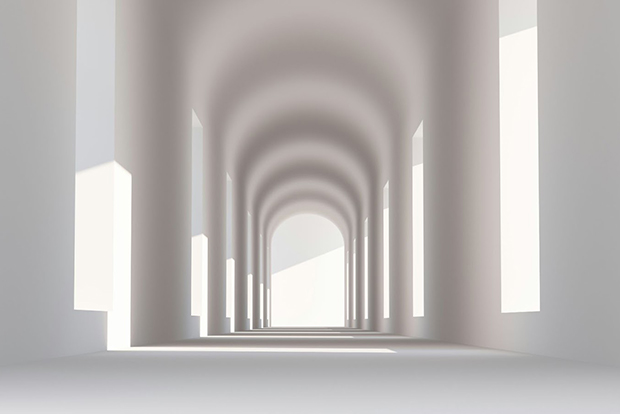Visualizing Success: Understanding 3D Rendering, Its Benefits, and Choosing the Right Partner
There is a growing interest in effectively communicating ideas, designs, and concepts across different industries like architecture, interior design, gaming, and product manufacturing, where there is now a high demand for realistic visualizations. As a result, many people now turn to 3D architectural rendering outsourcing technology to change how they conceptualize, design, and present their projects. This article highlights the intricacies of outsourced 3D rendering, its benefits, and how to choose the right outsourced 3D rendering partner.

What is 3D Rendering?
Creating two-dimensional images from a three-dimensional model using specialized software is known as 3D rendering. Skilled professionals use this technology to generate realistic visualizations of objects, spaces, or characters, which include shadows, lighting, and textures. In addition, 3D rendering has come a long way due to the advancements in hardware and software over the years. With the help of modern rendering engines, it has become possible to produce incredibly lifelike images and blur the line between virtual and real, especially with outsourced 3D rendering.
The Benefits of 3D Rendering
1. Enhanced Visualization
3D rendering has exceptional abilities to provide unparalleled visualization capabilities that can be used for architectural designs, product prototypes, or virtual environments, as it allows stakeholders to precisely see what the final product will look like. This level of realism aids in decision-making, helps clients and stakeholders visualize concepts more effectively, and leads to greater understanding and buy-in.
2. Cost-effectiveness and Time Efficiency
Traditional visualization methods, such as hand-drawn sketches or physical models, can be costly and time-consuming. However, 3D rendering outsourcing helps streamline the design process by allowing iterations to be made quickly and efficiently within the digital realm. This helps reduce the need for costly revisions and accelerates project timelines, enabling professionals to meet tight deadlines without sacrificing quality.
3. Customization and Flexibility
The possibilities with 3D rendering are virtually limitless. Professionals can easily customize and manipulate designs to meet specific requirements or preferences. Whether it is adjusting a room's color scheme, experimenting with different materials for a product, or exploring alternative architectural layouts, 3D rendering provides the flexibility needed to bring creative visions to life.
4. Improved Communication and Collaboration
Effective communication is essential for the success of any project. As such, 3D rendering facilitates clearer communication by providing visual representations that transcend language barriers and technical jargon. Collaborative tools also allow multiple stakeholders to provide feedback and make revisions in real time, fostering a more iterative and collaborative design process.
5. Marketing and Sales Advantages
3D rendering enables professionals to create stunning marketing materials, such as photorealistic renderings, virtual tours, or interactive presentations, that captivate audiences and drive engagement. Besides, captivating visuals have always made a significant difference as they help attract customers and close sales, whether showcasing a property before it is built or highlighting the features of a new product.
Choosing the Right 3D Architectural Rendering Outsource Partner
Ensure you search for a rendering and 3D visualization outsourcing partner with a solid history of delivering high-quality results in your industry. Evaluate their level of expertise, experience, and specialization to ensure they can meet your specific requirements.
Examine the 3D rendering outsourcing partner's portfolio to evaluate the quality of their work and the range of their projects. Also, pay attention to details such as realism and lighting, and attention to detail to assess their skill and proficiency level.
Make sure the rendering partner is proficient in the latest technologies and software platforms, including rendering engines, modeling software, and post-production tools required to create stunning visualizations.
Effective communication is essential for a successful rendering project. So, select an outsourced architectural 3D rendering partner who values open communication, listens to your needs, and provides frequent updates throughout the process. Furthermore, consider their ability to collaborate with other stakeholders, such as architects, designers, or marketing teams.
While cost should not be the sole determining factor, it is vital to consider your budget and the pricing structure of potential rendering partners. Choose partners who offer transparent pricing and flexible payment options to ensure the project remains within budget.
Lastly, take the time to read reviews and client testimonials to assess the rendering partner's reputation and customer satisfaction. Thus, look for partners who have received positive feedback from prior clients and have a reputation for delivering exceptional results.

Final Thoughts
3D architectural rendering outsourcing offers a range of advantages across various industries, including improved visualization, cost savings, better communication, and marketing potential. So, 3D rendering is an exciting technology that offers limitless creative possibilities, whether bringing architectural designs to life, visualizing product concepts, or creating immersive gaming experiences. Hence, professionals can maximize this powerful tool's potential to achieve greater project success by selecting the right 3D rendering outsourcing partner.
About the author
Copyright © . All Rights Reserved
